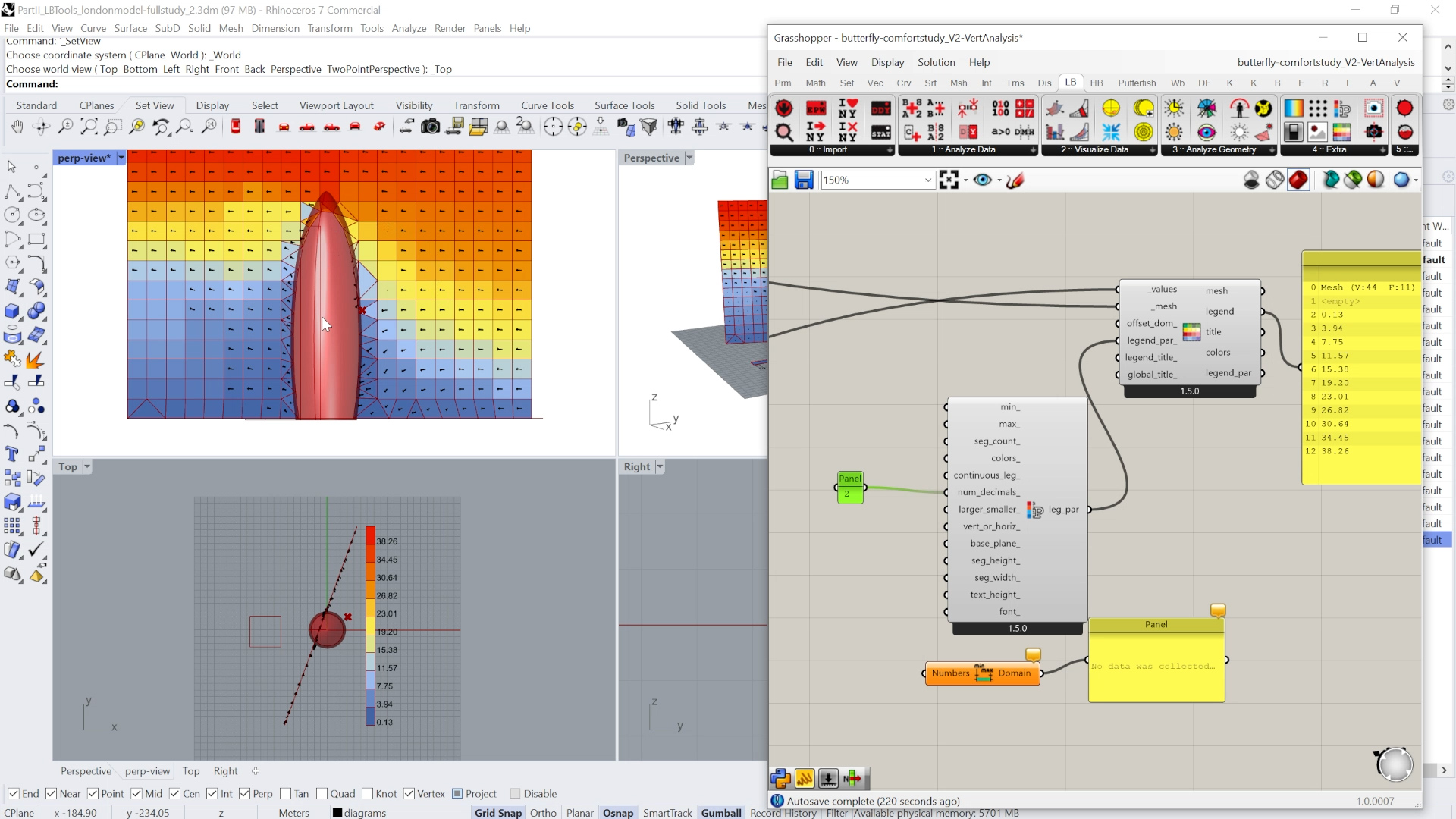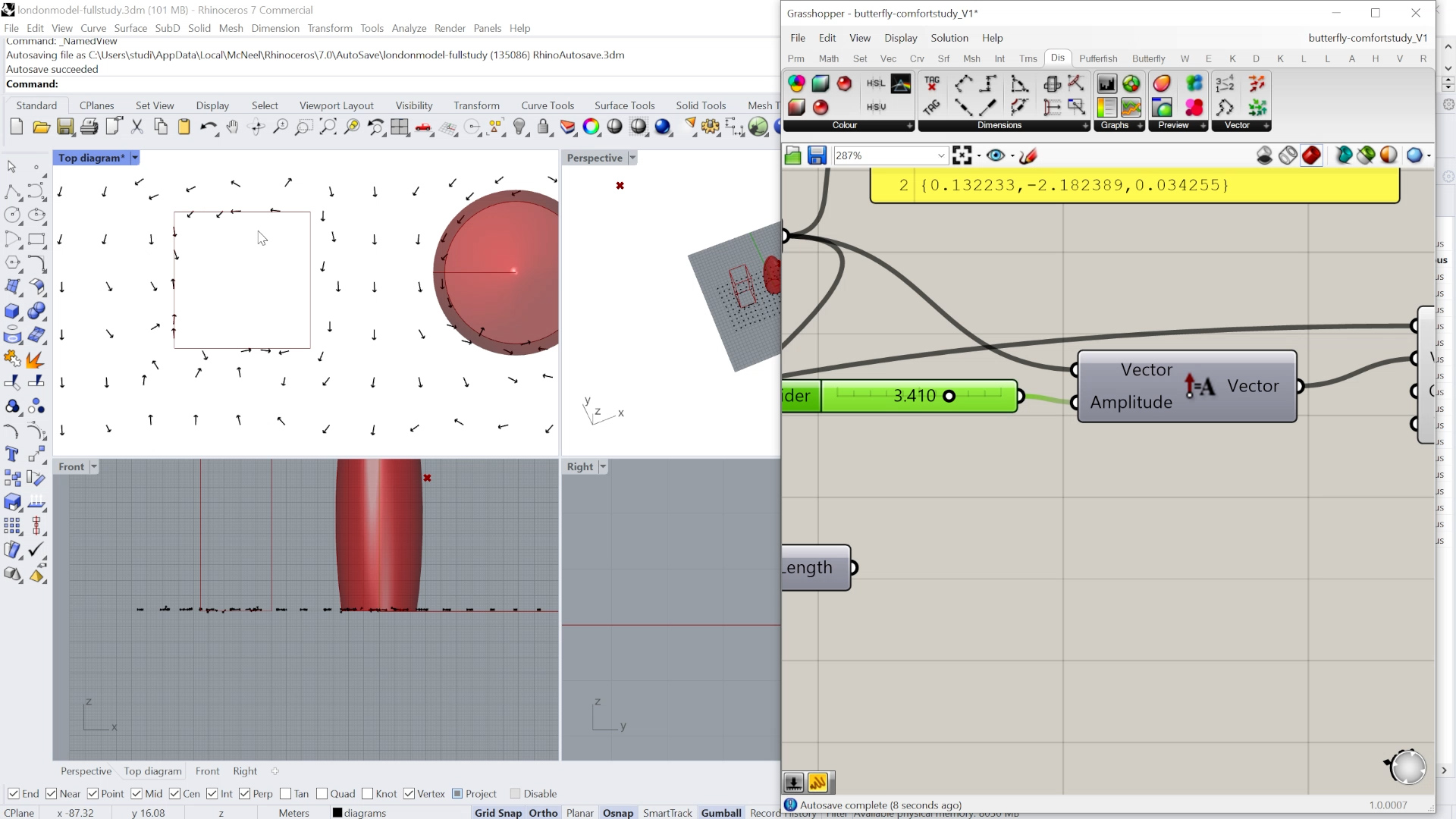Why take this course
Butterfly is a software plugin from Ladybug Tools that can create and run simulations to study airflow in and around buildings. It uses a popular open-source engine called OpenFOAM, which can run various advanced simulation models. Butterfly can quickly export building designs to OpenFOAM and perform many airflow simulations. For instance, modeling outdoor wind patterns or indoor thermal comfort and ventilation.
Brandon A. Gibbs - a veteran computational design expert - will teach you how to use Butterfly in this course. He will use the Swiss Re building in London as a base project to show you how to perform various wind simulation analyses. He will start the course by briefly reviewing the history of CFD (Computational Fluid Dynamics) and its applications to create sustainable buildings. This is followed by an overview of the Ladybug Toolset and a quick guide to installing Butterfly. When you’re all set, Brandon will start with the various exercises exploring outdoor and indoor wind and comfort simulations and analyses.
Learning about Butterfly, CFD analysis, and Wind simulations is crucial to architectural and engineering education. It can lead to better-designed buildings that are more comfortable, safe, and sustainable while also providing valuable career opportunities for students.
Fly Like a Butterfly: Unleash the Power of CFD for Building Design
Mostapha Roudsari first developed Ladybug Tools - which are tools to analyze and optimize the energy performance of buildings - in 2012. In 2016 Ladybug Tools was expanded - with the help of Theodore Galanos - with the addition of Butterfly. Butterfly adds Computational Fluid Dynamics (CFD) simulation to Ladybug Tools by connecting Grasshopper to OpenFOAM.
Real-world application
Butterfly allows students to simulate the airflow around buildings to mimic real-world conditions. By learning how to use this tool, students can gain valuable insights into the behavior of airflows in the built environment, which can be applied to real-world design and engineering challenges.
Interdisciplinary learning
Butterfly is an interdisciplinary tool that draws on concepts from physics, fluid mechanics, and environmental science, among other fields. By learning to use the tool, students can develop a more holistic understanding of the built environment and the various factors that contribute to its performance.

Improved design skills
By using Butterfly, students can improve their ability to design buildings that are more energy-efficient and comfortable for occupants. Students can make more informed design decisions considering natural ventilation, indoor air quality, and thermal comfort by understanding how airflows behave in different contexts.
Industry relevance
Butterfly is widely used in the architecture, engineering, and construction industry. Students who learn to use it will be better prepared for careers in these fields. By gaining experience with this tool, students can develop a valuable skill set that will make them more competitive in the job market.

1.- Intro to Butterfly
08min 41seg2.- Butterfly Requirements
00min 53seg3.- Computational Fluid Dynamics And Sustainability Basics
01min 32seg4.- Butterfly Exercise Introduction
01min 15seg5.- Setting Up Wind Rose and UTCI Functions Part 1
06min 05seg6.- Setting Up Wind Rose and UTCI Functions Part 2
04min 00seg7.- Setting Up Butterfly Wind Tunnel
08min 13seg8.- Running Butterfy Solution
04min 53seg9.- Reviewing Butterfly Solution
10min 28seg10.- Vertical Wind Analysis Script
02min 13seg11.- Conclusion
00min 55seg
